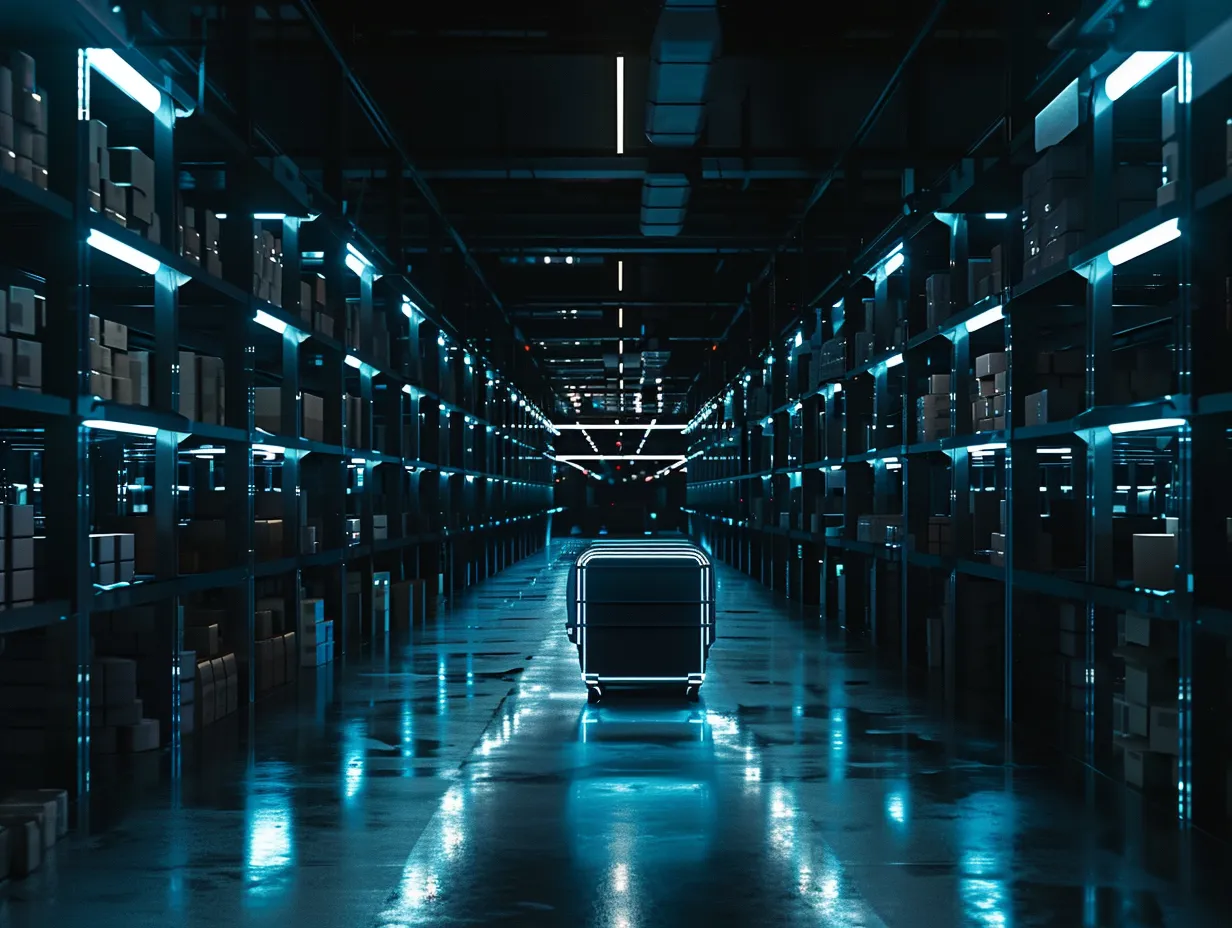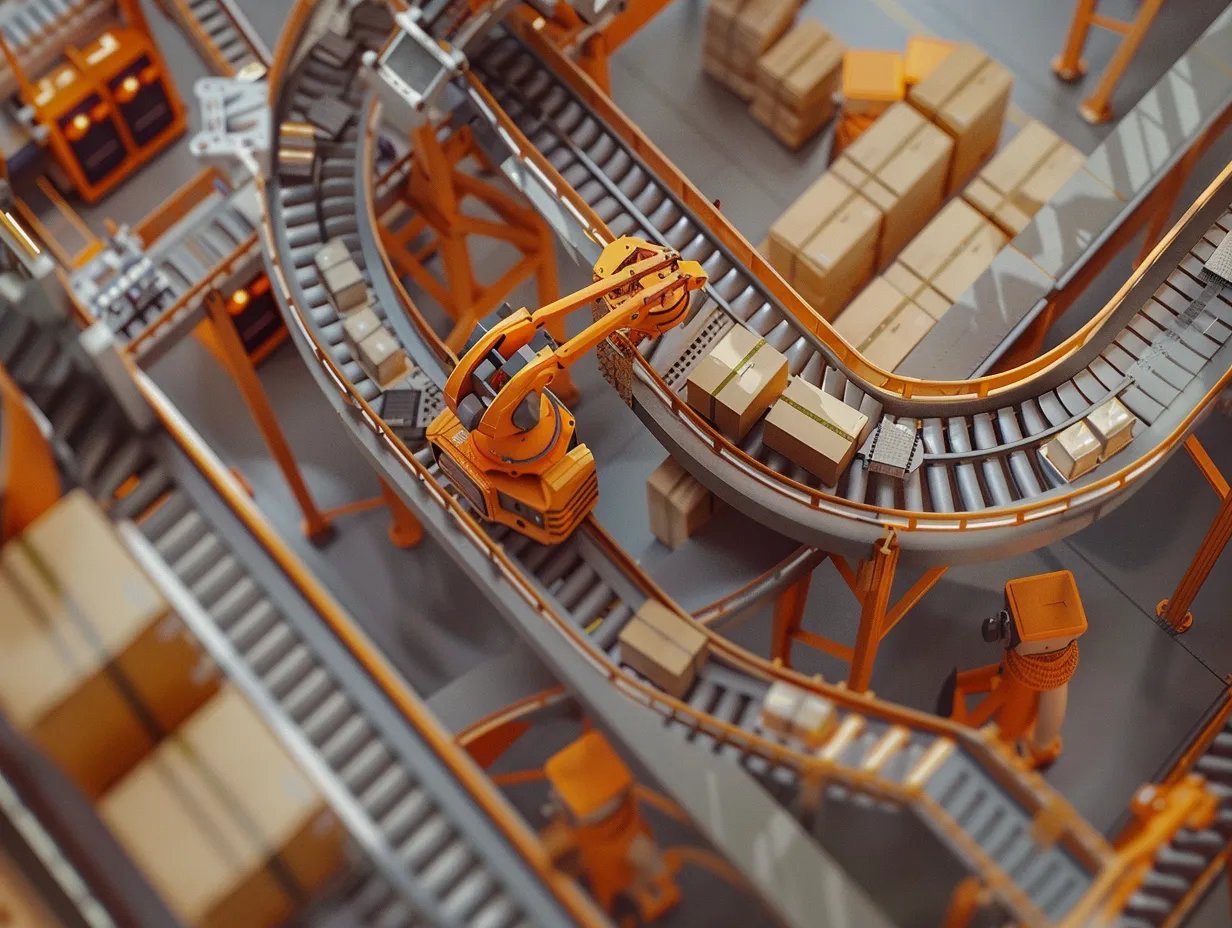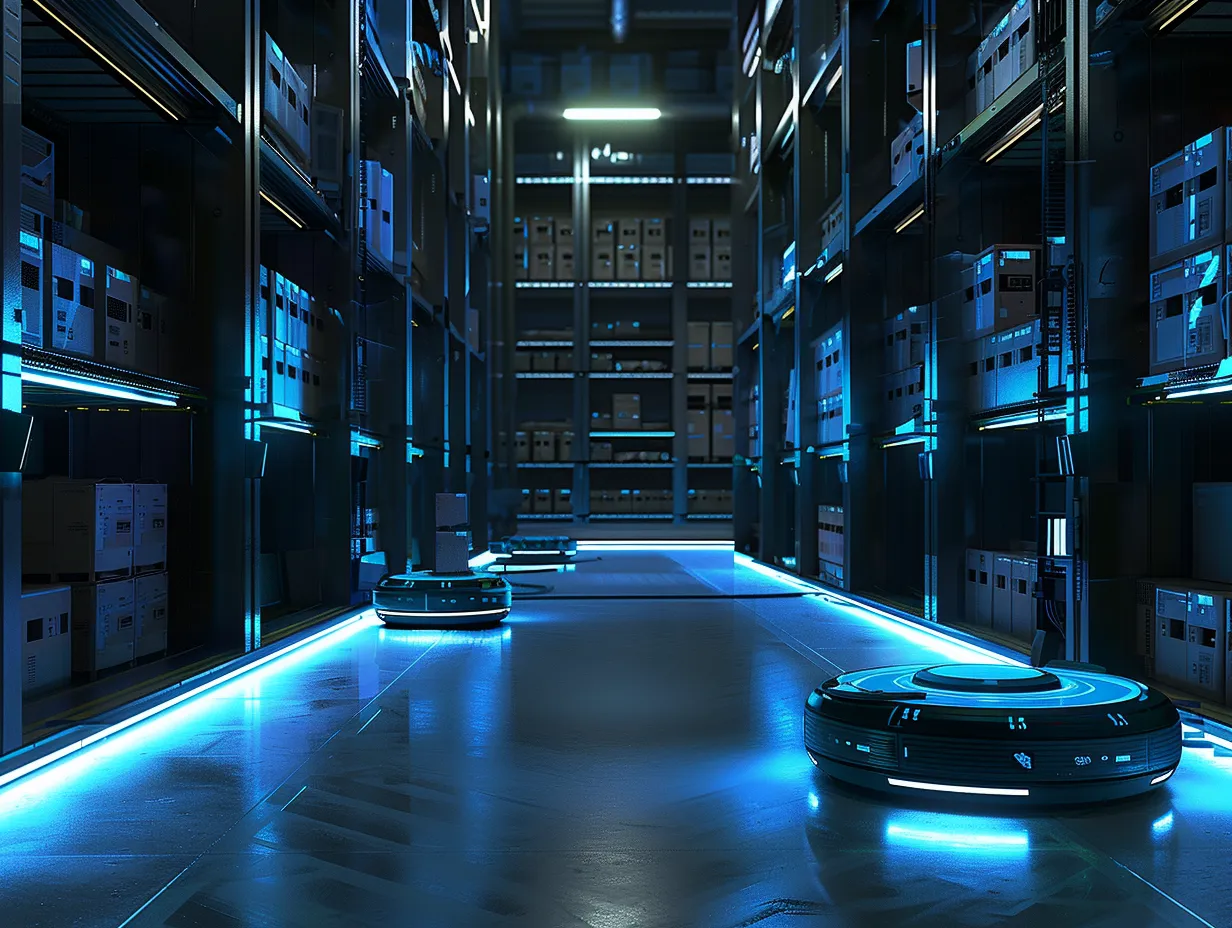What if your warehouse could operate seamlessly without turning on a single light?

Dark warehousing is emerging as the new standard in logistics operations. As the name suggests, these fulfillment centers are so fully automated that lighting becomes nearly unnecessary. By minimizing or completely eliminating human intervention, these facilities leverage robotics, artificial intelligence (AI), and Internet of Things (IoT) technology to handle everything from receiving to storage and shipping.
Dark warehousing addresses two critical challenges facing modern logistics: automation and operational efficiency. As labor shortages persist across the industry, dark warehousing offers a compelling solution by reducing labor costs while maximizing speed and accuracy.
It also aligns with the global push toward sustainability. By minimizing lighting and conserving energy, these facilities enable environmentally responsible operations. Efficient space utilization reduces the environmental footprint of logistics centers and minimizes resource waste—making dark warehousing increasingly attractive to companies focused on ESG initiatives.

The true value of dark warehousing lies in how advanced technologies work together seamlessly. These aren't simply warehouses operating in darkness—they're sophisticated ecosystems where robotics, automation systems, and IoT technology create a completely autonomous logistics environment.
Autonomous Mobile Robots (AMRs) are one of the most critical components. These robots navigate warehouse floors using sensors to calculate routes in real-time, avoid obstacles, and execute tasks along the most efficient paths. They transport incoming inventory to storage areas and retrieve products for outbound shipping, offering greater flexibility and space utilization compared to traditional fixed infrastructure.
Automated sorting systems represent another key element. Using high-speed cameras and sensors, these systems identify product dimensions, weight, and label information to perform precise sorting operations. In high-volume environments, automated sorting dramatically increases throughput while minimizing errors.
IoT technology and sensor networks play a vital role in dark warehousing. Sensors continuously monitor temperature, humidity, and inventory status throughout the facility, transmitting data immediately when issues arise. This network enables detailed operational oversight and proves particularly valuable for storing fresh foods and temperature-sensitive products.
Warehouse Management Systems (WMS) and AI-powered automation solutions also work in concert to run dark warehousing operations. WMS tracks inventory location and status while managing inbound and outbound activities in real-time. AI analyzes data to optimize logistics processes and synchronize workflows, further enhancing efficiency. Together, these technologies make dark warehousing increasingly precise and effective.

Dark warehousing cuts costs and improves accuracy through automation. Robots and AI maximize productivity with 24/7 uninterrupted operations. Technologies like AMRs operate more flexibly and efficiently than traditional systems, optimizing logistics flow throughout the facility.
By minimizing unnecessary lighting and using IoT sensors to activate only what's needed, dark warehousing significantly reduces energy consumption. This allows logistics centers to lower carbon emissions, achieve sustainable operations, and provide competitive advantages for companies pursuing ESG goals.
Dark warehousing combines IoT and AI to enable real-time inventory management and logistics flow optimization based on data. This increases fulfillment speed while preventing shipping errors and stockouts. Such efficiency strengthens customer trust and creates more resilient logistics networks.
While dark warehousing is attracting attention as the future standard for logistics, clear challenges must be addressed before widespread adoption. The biggest barrier is initial capital investment. The substantial costs required to build automation systems can be prohibitive for many companies. Implementing advanced technologies like robotics, IoT, and AI requires significant upfront investment and installation time.
Additionally, ensuring maintenance and technical stability for 24/7 automated systems presents important challenges. Unexpected technical errors or equipment failures can diminish operational efficiency, making continuous management systems essential.
Despite these challenges, dark warehousing has the potential to redefine the future of logistics. By simultaneously addressing labor shortages and sustainability—two defining challenges of our era—it's becoming an especially attractive option for companies pursuing ESG initiatives.